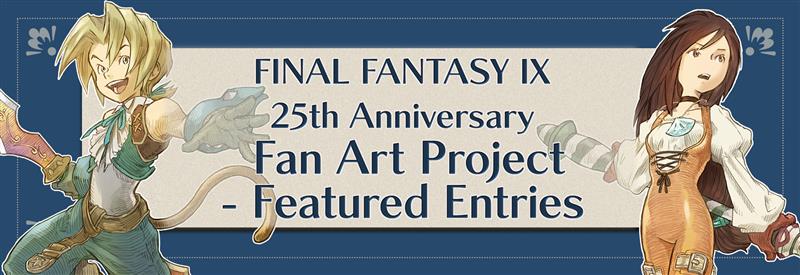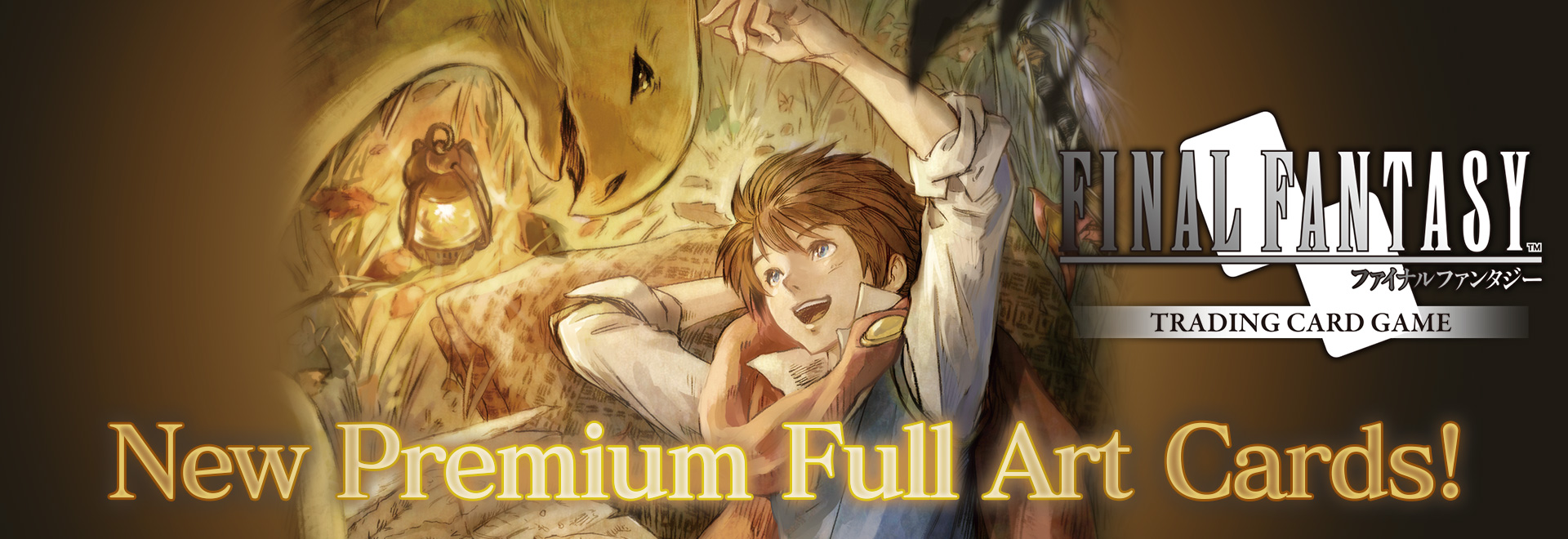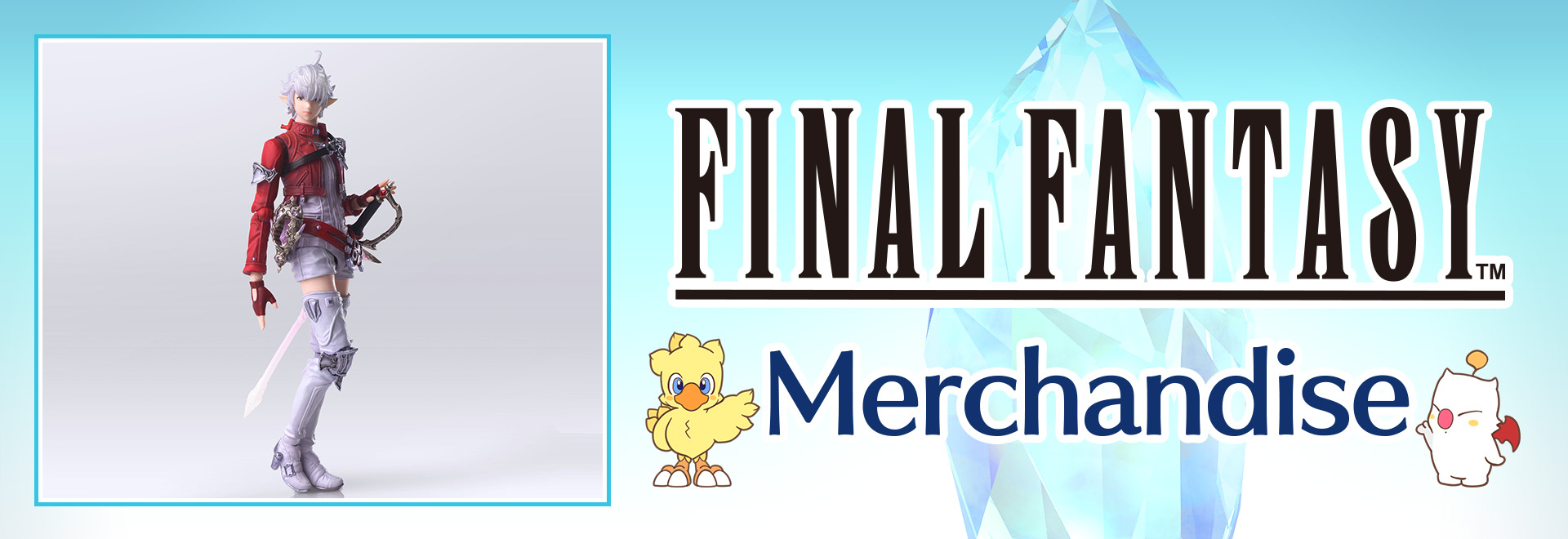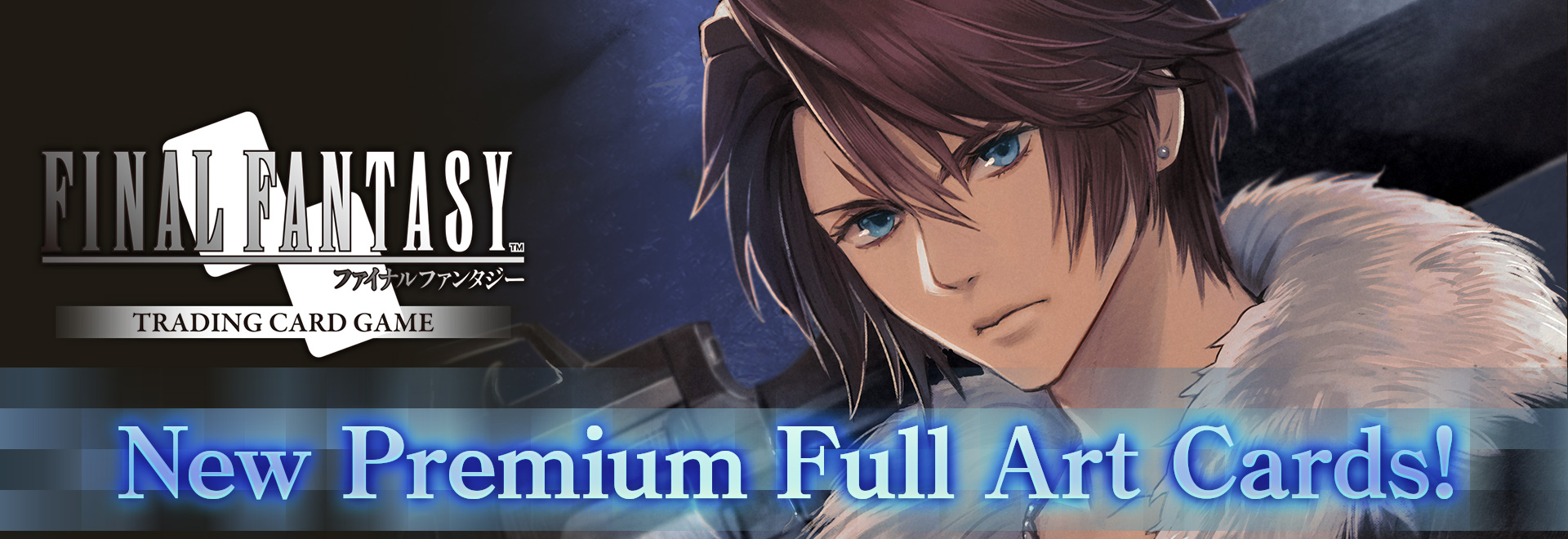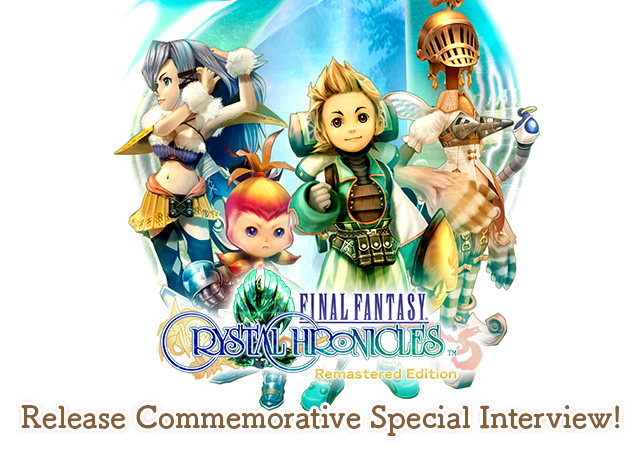
In anticipation of FINAL FANTASY CRYSTAL CHRONICLES Remastered Edition’s upcoming August 27 release, we spoke with the development staff behind the original FINAL FANTASY CRYSTAL CHRONICLES (hereafter FFCC) about its making! In this special interview, we find out just what kind of game FFCC is – if you’ve never played the game before, or even if you have, this is a great chance to get yourself ready and excited for FINAL FANTASY CRYSTAL CHRONICLES Remastered Edition! (*All images are from FFCC Remastered Edition)
Akitoshi Kawazu
Producer for FFCC. Also involved in the development of FFI and FFII, after which he created the first SaGa series title (released as THE FINAL FANTASY LEGEND in North America). As SaGa’s creator, he currently holds the position of SaGa series director.
Kazuhiko Aoki
Director for FFCC. Other work includes game design for early FF series titles and involvement in the Hanjuku Hero (Japan exclusive) and Chocobo’s Mystery Dungeon series.
Toshiyuki Itahana
Art director for FFCC. Has designed characters for many titles, including FFIX and the Chocobo Mystery Dungeon series. Recent work includes character design for Mobius FF, NieR: Automata, and more.
—The first thing that comes to mind when discussing FFCC is it was an action RPG which asked people to come together and play – unique for a FINAL FANTASY series title at the time of its release. Was that something you had in mind from the beginning of development?
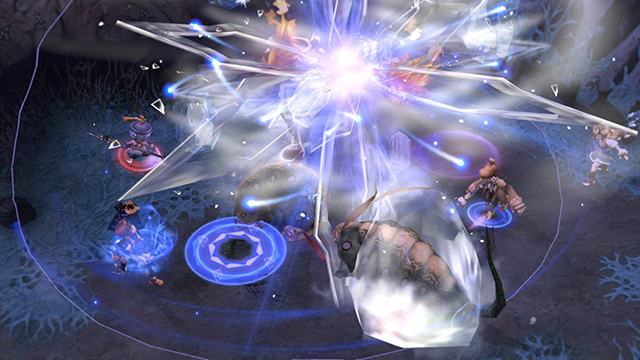
Kawazu: It was decided from the start that FFCC would be played by connecting the GBA (Game Boy Advance) to the GC (GameCube). But I can’t remember, was that also true for it being an action game...?
Aoki: There was talk early on that if four people were going to play at once, it would be hard to fit the gameplay on one screen without some action elements. So I did have a hunch it would end up an action game.
Kawazu: I’m fairly certain we didn’t first decide to make an action RPG and then start development.
Aoki: It just began with the concept of a game that can be played by connecting the GBA to the GC...
Kawazu: Right, and then when we asked the team for project suggestions, most everyone was thinking up action-style ideas. We wanted something two people, or even one person, could plug in a GBA and play, and so at that early stage we were leaning toward action. Speaking of, Itahana, you weren’t there from the start, were you?
Itahana: That’s true. I joined the project partway through.
Aoki: Itahana was originally working on FFXII, but we asked Mr. Hideo Minaba to let us have him and he was switched to the FFCC team.
Kawazu: The art team head was struggling to make progress on the game’s design, but after Itahana came over, the art all really started coming together.
Getting back on topic, I had something a little more...I suppose, RPG-like in mind. Hints or information would be shown on each GBA screen, then whatever people input in response to those would be displayed on the TV screen. I was thinking something closer to a table discussion than an action format. But I was the only one thinking that way, and most of the input we were getting from the team leaned toward an action game where people could have an exciting time playing together, so we decided to proceed with that format.
—So you wanted to emphasize bringing people together, which led to the decision to go with action-focused gameplay. Could you tell us a little more about linking between the GC and GBA?
Kawazu: Yes, there was a link cable that transferred information between the GC and GBA, but the amount that could be sent through it was severely limited. Something resembling an FMV, for example, was just not within the bounds of the technology’s capabilities. But using that technology to play the game was one of the core facets of the project, so while we understood there was a restriction to what could be displayed on the GBA screen, there was no option but to find a way to make use of it.
—What was displayed on the GBA screen varied from player to player, correct?
Kawazu: From the beginning we agreed it would be more interesting if each player was shown different things, but I want to say we didn’t immediately start building the game that way. Although I don’t remember exactly how each version over the course of development varied from the others.
—Was the element of four person play especially important?
Kawazu: The GB was known for gameplay that utilized transferring data between systems in person, and at the time we were starting to try multiplayer over a network like in FFXI. There were also MORPGs (“multiplayer online RPGs” which allow joining other players for online team play) such as PSO (Phantasy Star Online). Considering those tendencies in multiplayer gaming at the time, we figured why not take FFCC in the same direction. I think Nintendo also had a mentality with the GBA link cable of networked gaming taking place right in front of your eyes, with the GC as the host, so we wanted to see if we couldn’t incorporate that idea.
—Not only was FFCC four players, but there were four tribes in the game as well. Do those numbers match on purpose?
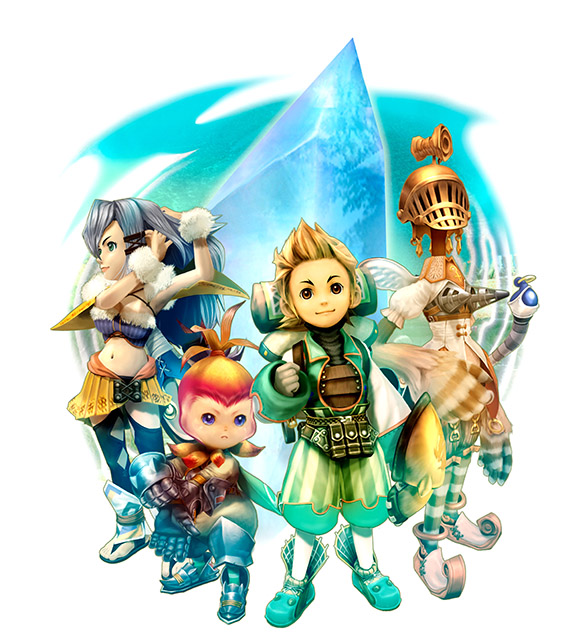
Aoki: We did feel that, if four people were going to be playing, it would be good to allow a certain degree of characterization for each player’s avatar.
At the stage of development where we had to decide which parts of the game we would invest money into, being a spinoff from the FF series allowed us to carry over already-established magic and monsters. That eliminated much of the need for explanation of those parts of the game world, which let us allocate more time to creating a greater variety of designs for the characters players would be controlling directly. Four tribes, each with male and female genders, of which there were each four different physical appearances – that meant thirty-two total character designs players could choose from.
Basically, borrowing monster models and the like from the then recently-released FFIX and FFXII, which was still under development, allowed us to dedicate more time to designing the avatars players would use.
—So that’s how there came to be such variety in the player characters! Amongst those were humanoids and also the Yukes, who looked quite unique—how did their designs come about?
Itahana: There was talk of humanoids and also a kind of magical species. It was hard to distinguish between the four tribes when they all looked like humans, so I wanted to change the character designs first thinking in terms of silhouettes, tweaking the balance between the tribes based on that.
I thought that if we only make adjustments to detailed aspects of the characters, it might be difficult to tell who is who when moving around the screen. So, when I say “silhouettes,” I mean things like tall or short. In the case of Selkies they’re fuller in the upper body – the shoulders and chest – whereas Clavats have their mass distributed more in the lower body.
Initially there were plans for a tribe of humanoid beasts with cat ears, but Mr. Kawazu really hated that. [laughs] So I figured if animals were a no-go, then perhaps plants would work – that’s how the Lilty were created, for example.
—Each tribe has an assigned trait such as the peaceful Clavats, the strong Lilties, the intelligent Yukes and the self-seeking Selkies. Were these decided before design for the game began?
Itahana: I’m pretty sure those were established after development started. I want to say the game planners came up with them later on.
Aoki: I believe we decided on a general disposition we wanted for each tribe’s battle specialization and then left whatever needed to be created beyond that up to the game planners.
—Do you have a favorite tribe, or one you always used when playing the game?
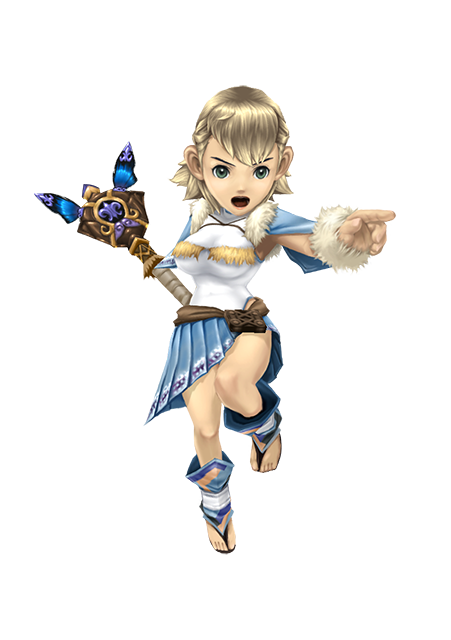
Kawazu: I’m pretty sure I played it safe and used the Clavat. Or rather, whenever I’d do play-tests, it was usually Clavat. Personally I like how the Yukes look, but they didn’t feel well suited for solo play so I suppose I just simply used the one that hits hard. [laughs]
Aoki: As for me... I’m not sure if Itahana remembers this, but he came to me at one point saying he was really stuck trying to come up with new designs while working on the four tribes, two genders, four patterns each I spoke about earlier. So I suggested a skirt with a white base and blue accents—a female design. What he came back to me with was the girl Raccoon Tail, but she wasn’t popular with the development team at all and no one used her. [laughs]
So I decided to take responsibility for that and always chose Raccoon Tail.
Itahana: That would be a design failure on my part. [laughs]
I liked Yukes – they actually weren’t popular either. [laughs] Everyone chose characters like Selkies, so I figured I would go with a Yuke. As an action game, FFCC of course had collision detection, and if I remember right it was based on body shape. So whether you got hit or not would depend on the size of the character you chose, and I think there were attacks like beam lasers Yukes would always end up taking damage from. You know, since they were so tall. So you have a whole character category that’s unpopular and takes all kinds of damage – that definitely made it feel like a Mr. Kawazu title, in a sense. [laughs]
—From what you’ve said it seems some parts of FFCC’s design were quite a challenge. Was it a time-consuming title in that sense?
Kawazu: For Yukes, they were originally called Highlanders. I do recall their design took quite a while, however. My memory is vague, but I want to say the character designs changed pretty significantly over the course of the game’s creation. At first it was things like there not being much of a difference between the Clavats and Selkies – the character designs we went through during development varied greatly from the ones that made it into the final game.
Itahana: That’s true. For instance, the Lilties used to be taller than they are now.
Kawazu: Going back to what Itahana was saying about collision detection, for that we had some very talented programmers on team, so we chose to use different detection models for characters where normally the same would be reused. They’d do things like calculating hit boxes individually for characters based on their 3D models, so we ended up with collision detection that was much more advanced than typical for the time. The programmers’ work was really on a whole other level. [laughs]
—Moving on, we’d like to inquire about FFCC’s world. The miasma and crystal chalice factor heavily into both the game systems and the lore of FFCC. Had those concepts already been established when development started?
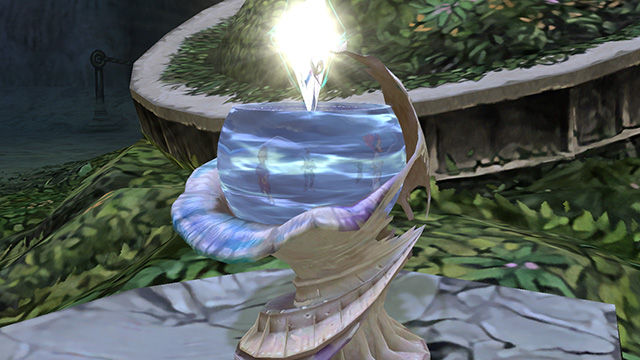
Aoki: There were a few concepts I was thinking I wanted to include from the very beginning.
At the time a lot of titles existed where there’d be multiple people all sharing the same screen with the game environment scrolling by, and you’d wander along the edge of the screen mashing buttons to take out enemies. I felt it was hard to tell what you were doing on screen in those kind of games, which meant cooperative play didn’t really work unless everyone shared what was happening on screen with each other. That inspired me to put out a request to the team for ideas that would keep players in the middle of the screen.
In the ideas I got back, there was the suggestion to include a mechanic where going outside of a certain area would damage the player with poison or something. From that, we decided to implement the concept of a crystal in the middle of the screen which protected players within a certain range, and if they stepped outside of that range, they would take damage. With a system like that, players stayed in the center of the screen so it would be easy to tell what was happening. Using that as a base, we developed the world concepts of miasma and crystal chalices.
—So concepts that were initially just game mechanics came to play an important part in developing the game’s lore as well. What about all the areas the main characters’ crystal caravan visits in their journeys – how did their creation take place?
Aoki: Being entirely honest, those just came from the event design teams throwing out lots of different ideas. We had a vision of what we wanted to create, so I think those concepts were all the result of teams discussing how they wanted to portray each area and packing those ideas in.
—The narration that introduces each area is such a memorable part of FFCC. Were those put there to help further establish the game world?
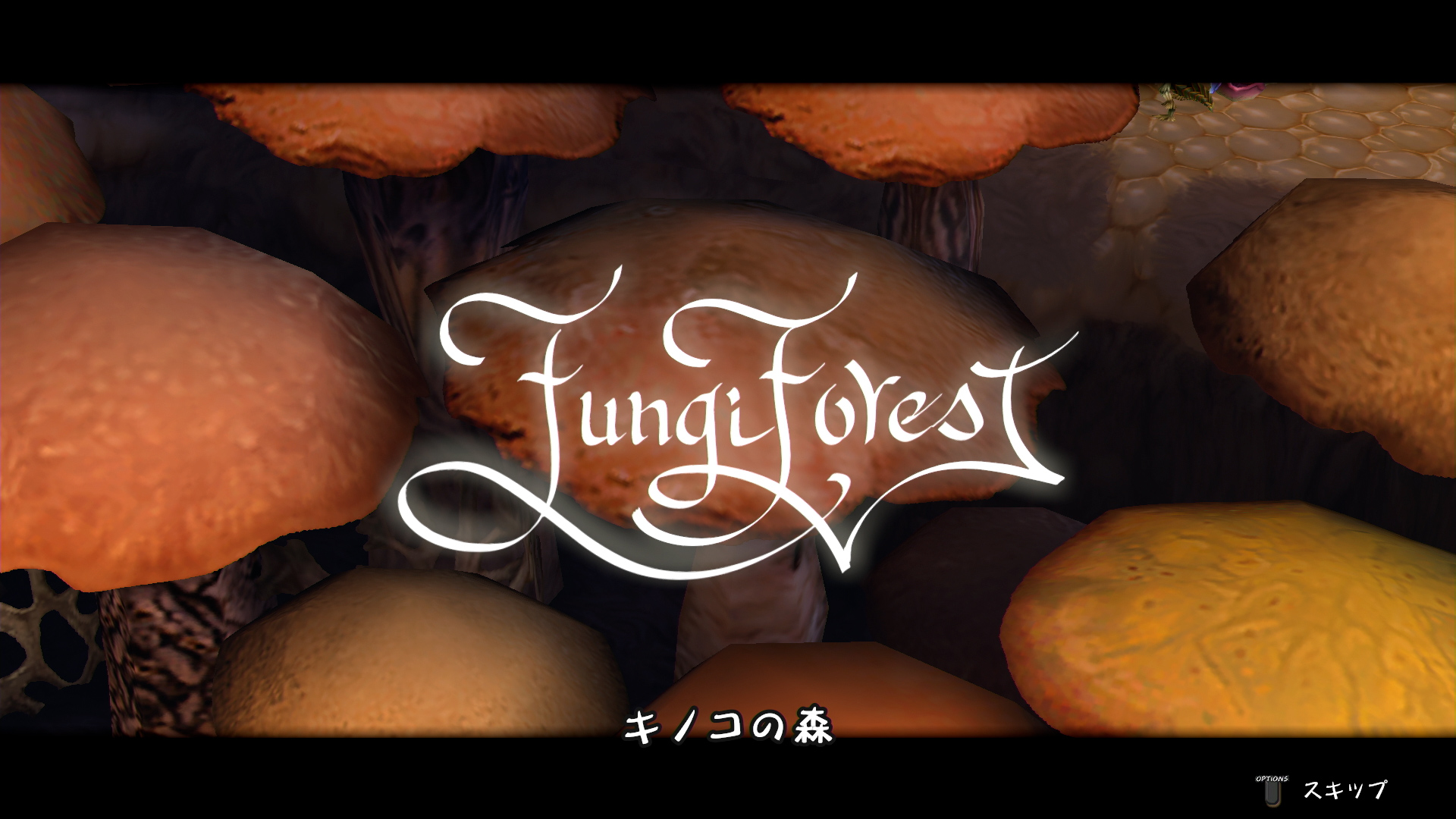
Aoki: That was, of course, one way we wanted to express the game’s universe. It also had the purpose of giving the player an overview of the area they’d be exploring beforehand. We hoped that would give a general idea as to what kind of map and monsters they’d be dealing with.
The narrations were written in various styles, but our intention was to give the player the feeling of being on a journey similar to what might be felt by the main characters during their caravan quests. For that purpose, the introductory narrations were structured as messages to travelers of sorts.
—Are there any areas or bosses that really stand out in your mind?
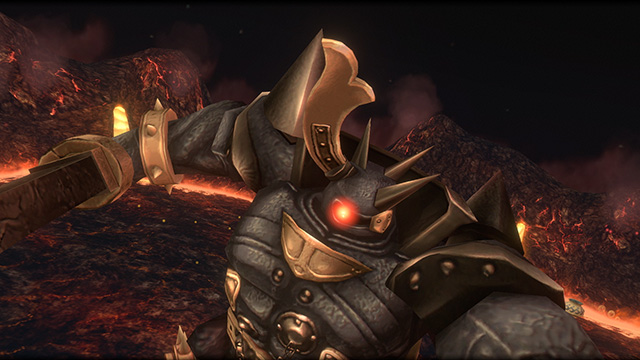
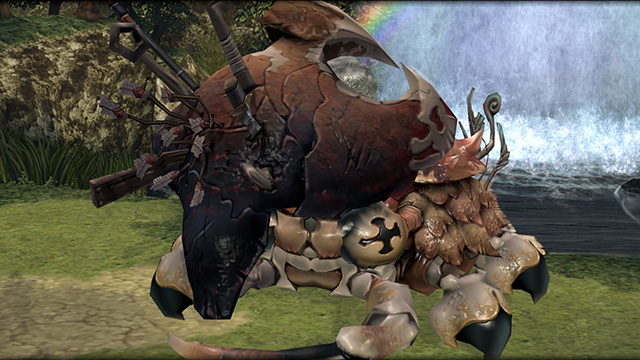
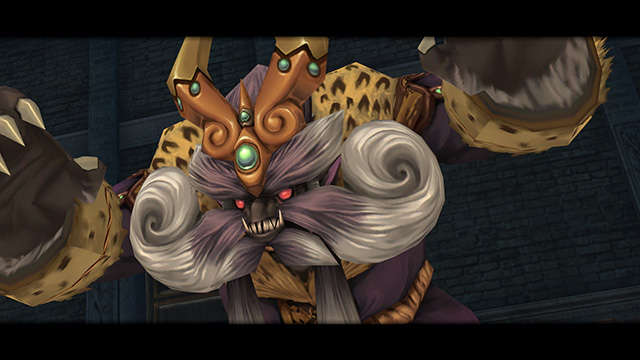
Kawazu: Originally, a lot of areas were being designed to go along with a boss we’d be using, or to align with a place the player had to visit during the story. As Mr. Aoki said, there were monsters we’d borrowed from other games, so designing in accordance with those was a big part of that. As such, there really aren’t any that are particularly significant in my memory.
Itahana: From a design perspective, Jack Moschet (Gigas Lord) was different from the other bosses and I thought he was pretty interesting. That area’s design also had a fable feel to it, with tonberries as cooks and the like – I thought it was very charming. Also, I believe the slime mold-like stuff in Tida Village was newly created for FFCC. I found that pretty neat as well.
Aoki: In terms of gameplay mechanics, I’d say the boss I thought was fun was the iron giant. By defeating the monsters carrying his swords in the areas leading up to him, you could reduce the number of swords available to him in the boss battle.
—The boss of the first area the player visits, River Belle Path, is the giant crab – it appears in later series titles as well, correct?
Kawazu: I can’t say I know why that is. I think it may have something to do with it being the first boss we created, for the demo of FFCC.
Aoki: That’s also the boss the development staff played against the most.
Kawazu: Yeah, it was kind of like, “Oh, so the first boss is a crab!” The Mana series is the same way, for some reason there always ends up being a crab. Since there’s a long history of fighting this same enemy, the swords stuck in it increase with each appearance. [laughs]
—The background music of FFCC is composed by Ms. Kumi Tanioka and contains a lot of unique songs in an ethnic music style. Was that style intentionally chosen to establish a specific feel for the game world?
Kawazu: I want to say it started with Ms. Tanioka wanting to utilize old instruments. There was also the fact that scenario designer Mr. Masahiro Kataoka had experience performing music in an Irish style, and from that not only the music but also the game world itself took on a Celtic aesthetic.
—With the release of the new Remastered Edition soundtrack on the way, it would be great if many people get to experience the newly imagined world of FFCC Remastered Edition with their ears as well!
Moving on to the next question – FFCC can also be played solo, during which your partner for the adventure is a moogle named Mog. What reasons were there for making Mog the partner in single-player? And was there a reason for the round, fluffy design of the moogles in FFCC?
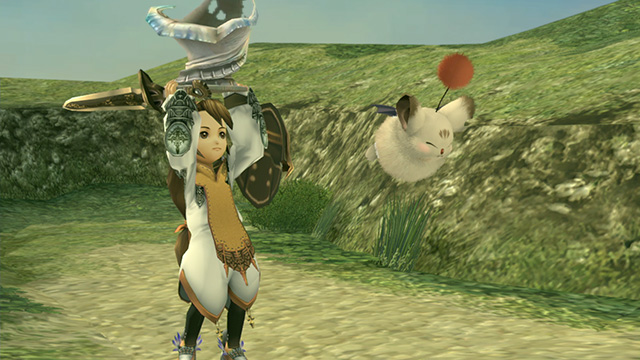
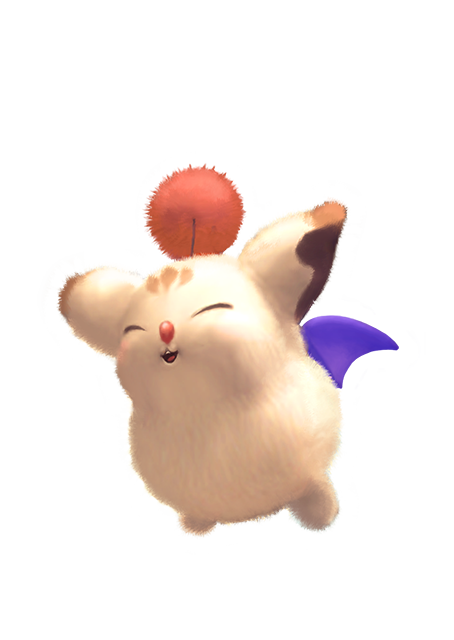
Aoki: The decision to give moogles that design came much later in the development process. We learned that on GC it was possible to grow and cut hair like you see in the game, so we gave that feature a shot and that’s how the moogles ended up as they are in FFCC. As for why Mog became the single-player partner, I suppose that’s because Mog flutters around in the air and can move freely.
Itahana: I actually drew a lot of different designs for the moogles – with arms, or cat-like, or ones close in design to those that appear in FFIX. In one set of design ideas I put together was a drawing where I referenced a round moogle I once saw in art drawn by Mr. Yoshitaka Amano, and if my memory serves right, I went and showed that collection of designs to Mr. Kawazu. But back then he was very busy so sometimes getting him to check things wasn’t easy. [laughs]
However, this particular time he was able to look them over, and he immediately chose the round moogle. I remember him just saying, “Let’s go with this one.” It wasn’t often he’d okay something outright, so that really sticks out in my memory.
Kawazu: It was a question of whether it would be better if they had arms, so I was comparing designs with or without those. The moogle without arms was clearly cuter by a long shot, which is why I chose it – but then the conversation turned to whether it was ok for them to not have arms. I figured it was fine, they’re moogles.
When exactly did the idea to have Mog carry the crystal chalice come up?
Aoki: I’m fairly certain it was near the end of development. I believe first we made sure the game was fully operational with four players, then moved on to how single player would work.
Kawazu: Yeah, that sounds right. At first we had the player carrying the crystal chalice themselves in solo mode.
—There were not only moogles, but numerous NPCs such as citizens from other countries or other village’s caravans.
Aoki: It was a question of how much variety we could include in the letters players received and how many memories they could make over the course of the game. There was also the fact that FFCC’s story consisted of meeting a lot of different characters, and all of those meetings tying together for the game’s ending, so we had the event design teams pushing themselves as far as they could to create more material to fill out the game world.
—So then, developed background stories for each individual character wasn’t something that was planned from the beginning?
Aoki: This might just be one of those things you have no option but to mull over during game creation, but it became a question of how much story could be seen during a four player action title and whether it would have been best to just make it a set of stages to clear with four friends and that be the end of it.
I think we did a good job of creating a game that’s gratifying even if you don’t see all of the story before the ending, while striking a balance between something that can really be enjoyed solo and still taking advantage of what makes multiplayer fun during four-person play.
—It is true that even if you don’t learn all of the NPCs’ stories, time continues ticking on and the game’s adventure progresses. Meeting and getting to know the NPCs gives you a deeper understanding of FFCC’s world, though.
Aoki: Exactly. We hoped people who wanted that out of the game would really sink their teeth in.
Kawazu: There was a person on the event design team whose entire job was to write letters. They just kept coming up with more and more new content for those. It really was an impressive amount, and I remember thinking about how tough their job must have been.
Aoki: Keeping track of in which situations what kind of letters would be sent had to have been tedious as well.
—Are there any NPCs you remember particularly well?
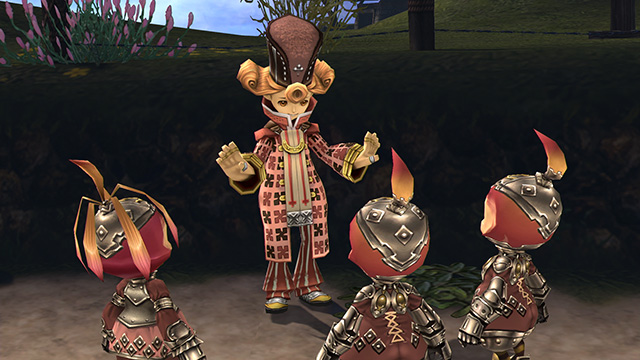
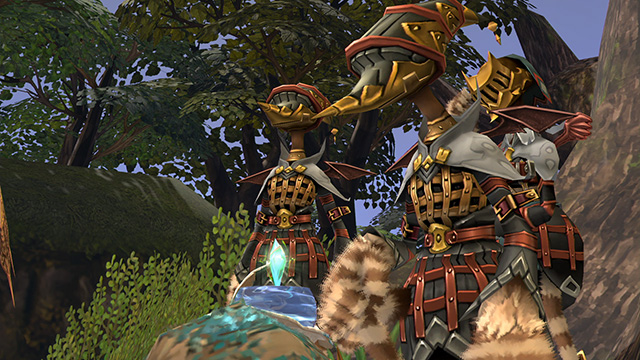
Kawazu: There was one in particular who I just found really obnoxious. Jeez, what was his name? [laughs]
Every time I ran into him, he’d make some remark that pissed me off. It made me want to ask, “Who do you think you are, man?”
Itahana: It was probably Gurdy. [laughs]
I felt the same. At first he makes you so mad, but as you continue talking to him his real depth comes out and you realize there’s a lot more to this character. When I designed Gurdy, I wasn’t told any details about his personality or background—just that they wanted me to design this suspicious traveling man who’s not exactly a preacher, maybe an evangelist of sorts. I drew him without any idea what kind of character he was.
Aoki: Personally, I liked this Yuke who kept referring to a piece of old crusty bread as a “world model.” I want to say Amidatty? I used that same phrase – “world model” – to refer to things all the time back then.
—During development, was there anything in particular you struggled with or any mishaps you’d be willing to share?
Kawazu: I had never made a multiplayer action game before, so from the beginning I’d say what I fretted over most was how to go about making an interesting game in that style. Just hitting goblins around is pretty straightforward, but try to add a little something more than that and it suddenly gets really challenging to create a satisfying experience. The enemies end up defeated in the blink of an eye if you include magic that’s just a little too strong, things like that.
The gameplay itself had a totally different feel from the command-based RPGs I had made up to that point, so I had to learn the syntax and feel of the game while the development team was working on it, fumbling along as I gathered a sense of how to go about making this thing. It was terribly difficult at first.
Getting to where you can hit an enemy and eventually defeat them doesn’t take much time at all, but the progress to that next step was a real struggle. There were even times where I felt like it might have been better to just start over.
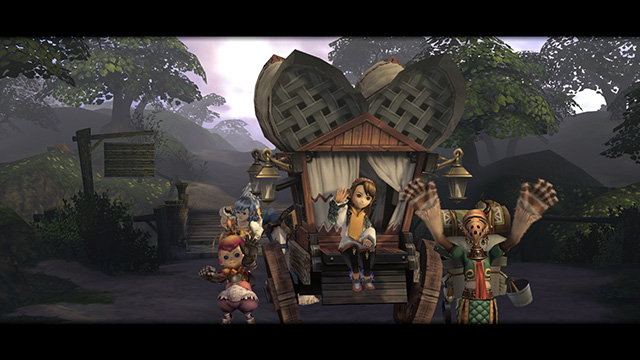
Aoki: I still have my notes from FFCC
’s development so I looked them over before the interview. There was this mentality on the team at first that if we put different information on each GBA screen, the players would look at that and consult each other on how to proceed in the game. But we found out there was a tendency for people to only look at their GBA, not what was on the GC [TV] screen – which was supposed to be the primary focus – and if even one person ended up doing that, then the game wouldn’t progress. So, according to my notes, we had meetings on how to build a game environment where people would look at their GBA screens while still focusing on the screen the GC was hooked up to for main gameplay.
From that, there was a suggestion to include options of sorts where you could assign magic to players beforehand, giving someone cure to be the healer or taking fire into an area where it’ll be effective against monsters. However, we still had issues where progress with the game would come to a halt or times where the game just wasn’t fun. From there the idea came up that it might be good to have monsters drop magic the player could pick up, which would put the focus on the GC screen. Adjustments like that probably presented the biggest challenge.
Mog came up a little bit ago, but he also presented some issues. How to make him stronger, or whether to add more gameplay features using him. We also debated about whether to make the caravans you encounter during travel more like fortresses that allowed some extra play features—just lots of discussion on how to make solo play more satisfying.
Itahana: Including both programmers and planners, how to portray the miasma was an issue that stumped us for a while. We wanted to present visually pleasing environments, but that’s hard to do when drawing an area that’s infested with poison. This genius programmer came through for us and created a spherical outline effect that gave the miasma a presence which wasn’t too intrusive, but then we had the issue of where the player’s view point should be. Of course looking at the game field from above makes it easy to tell what’s going on to an extent, but that doesn’t do any favors aesthetically. Purely from a gameplay perspective, an overhead view is least confusing, but we also wanted to show areas in the background of the game environments. But then you have players both up close and far away, so it’s hard to make out what’s happening, and so on. I remember a lot of minute adjustments were made to get the camera angle just right.
—Moving on, FFCC Remastered Edition features online play. Is there anything you hope players will get out of this new functionality?
Kawazu: Ideally I’d like players to have a rowdy time with friends while playing, and I think there’s voice chat and lots of other modern conveniences that make that possible. I also think it’s nice there’s no limitations between platforms for online play.
Aoki: In this age online meetings and so on are becoming pretty common – what I really would like is for people to gather in the same space with close friends, but that can be done over the internet now. Either way, it would make me happy if people enjoyed this game together regardless of the means.
Itahana: In the original version everyone had to bring their GBAs to play together, and I think that level of entry was pretty high for a lot of people. This time you have things like the lite edition which reduce the preparation to play considerably. I hope people who weren’t able to experience multiplayer in the original or who are playing for the first time will be able to hop right in and enjoy the Remastered Edition with their friends.
—On to our last question, could we please get a comment for all the fans of FFCC?
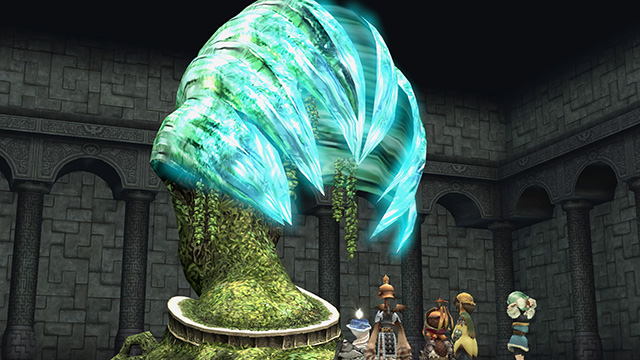
Itahana: It’s been about 17 years since the original’s release, and we’ve even got people on the Remastered Edition team who played as fans the first time around. Those folks have such a strong attachment to the original, and it moves me deeply knowing they’ve poured their hearts and souls into this game.
Despite its cute cast of characters, FFCC possesses a curious world and story with serious depth. It presents an experience unlike any other FINAL FANTASY title, so I hope you’ll give it a try.
Aoki: Despite being old enough that even its creators have trouble remembering everything, we’ve gotten great feedback about FFCC from so many people and it makes me extraordinarily happy. I’m ecstatic this title is so well loved even after so many years. Having been originally designed for four people, those of you who go solo may face some challenges. It would make me very happy if you keep pushing on even when it gets tough, or have friends help you if possible, and see the game through to its end.
Kawazu: FFCC was created a good while ago, but I think the gameplay still feels fresh today. I hope you’ll enjoy its weird, wonderful and sometimes even a little obnoxious world and characters. There may not be much time to really take everything in when playing with friends, so please give both solo and multiplayer modes a shot.
—Thank you for your time today!
FINAL FANTASY CRYSTAL CHRONICLES Remastered Edition Official Site


